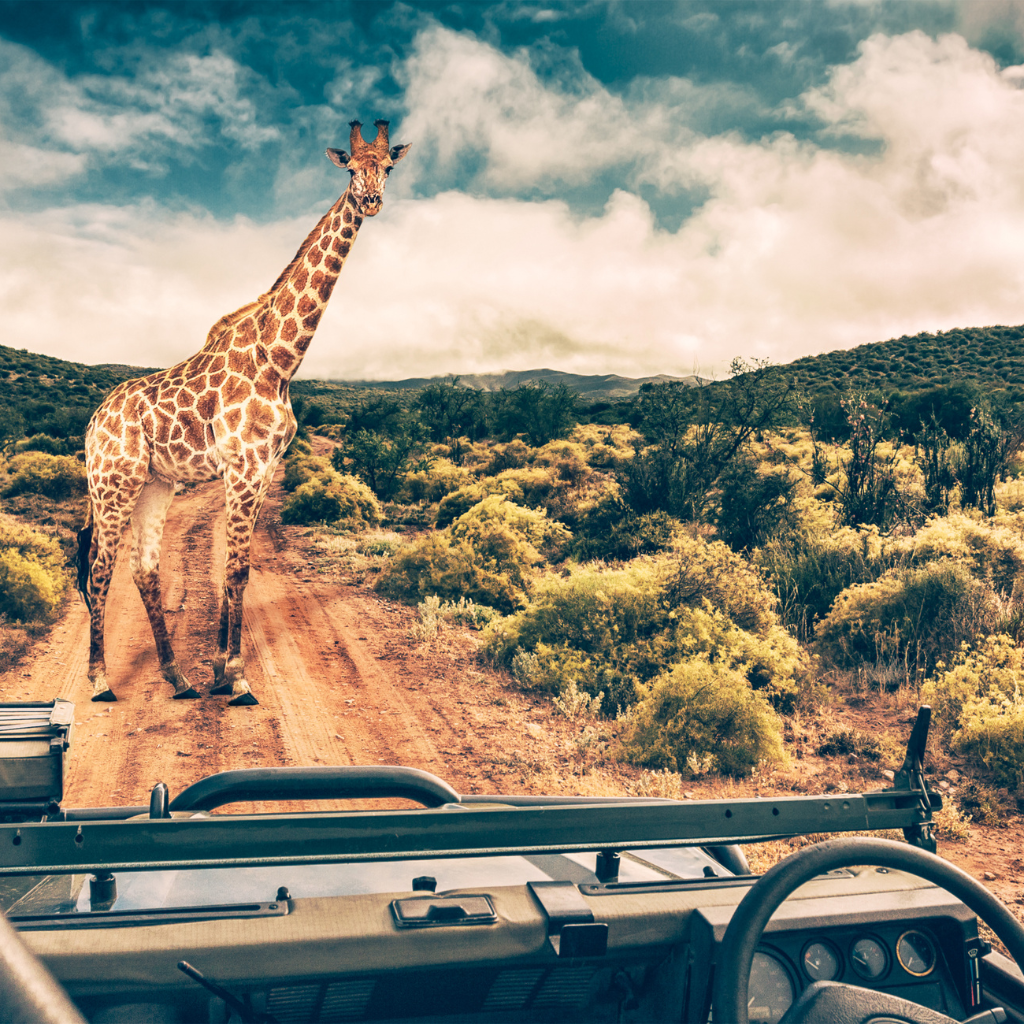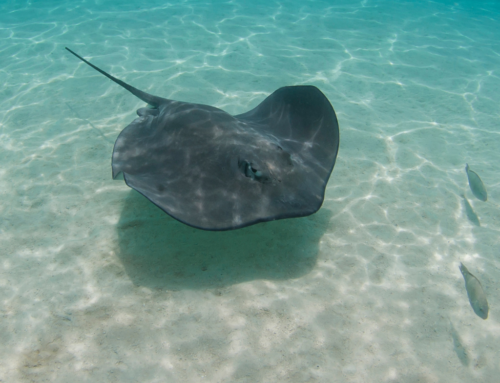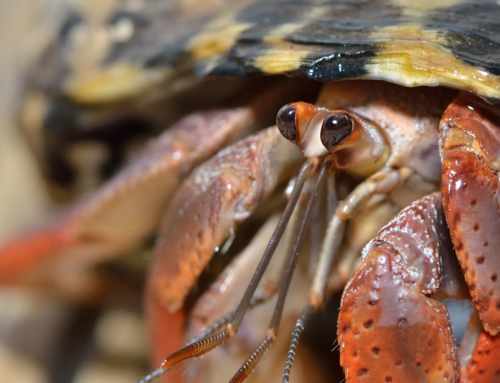
It’s no secret that the tourism industry can be detrimental to the environment. Transportation pollutes our air and water, tourists leave behind trash and destruction, and tour directors cut corners to save money at the expense of wildlife and the environment. Not only that, but advertisements are full of misleading information and unethical destinations will use everything in their power to get tourists to visit. However, tourism focused on ethical wildlife experiences can vastly improve the lives of wildlife, raise awareness, and maintain their environment. There are ways to navigate the targeted ads and determine which destinations are worth visiting, and which should be avoided. Here’s why wildlife tourism is so important, why it should be supported, and how to avoid unethical tourism sites.
What is Wildlife Tourism?

Seeing Galápagos tortoises in their natural environment was incredible!
Wildlife tourism is just that…tourism to view or interact with wildlife. It can look drastically different between destinations and activities from bird watching in a park to walking with lions in Africa. Wildlife tourism is broken down into three main categories:
- Passive wildlife tourism – observation based without direct interaction with the animals (safaris, birdwatching, snorkeling)
- Active wildlife tourism – directly interacting with wildlife (hunting, riding elephants, volunteer tourism)
- Captive wildlife tourism – viewing wildlife in captive settings such as zoos and aquariums
None of these categories are unethical as a whole. Indirect wildlife tourism is probably the most ethical overall, but direct tourism can include ethical or helpful activities such as hunting, fishing, and volunteer tourism. Captive settings, when done right, can be ethical as well. All three categories have their pros and cons and leave positive and negative effects on wildlife conservation and the environment.
The Negative Effects of Wildlife Tourism
Thanks to the increased use of social media and the availability of international flights, wildlife tourism has been increasing worldwide. In fact, 7% of world tourism is associated with some kind of wildlife tourism with the numbers increasing every year. With the growing demand, some destinations, even ethical ones, are having trouble keeping up with the demand and tourism impacts.
Pollution
With the increase in travel, increased pollution is inevitable. Planes, cars, trains, and boats all emit greenhouse gasses, and many travelers leave a larger carbon footprint than they realize. The polluted air, land, and water affects every species differently, but is having major negative impacts on specialized species such as corals and sea turtles.
Construction & Habitat Loss
As more tourists begin visiting an area, construction of hotels, restaurants, and other accommodations are inevitable unless precautions are put in place. Ironically, this can cause habitat loss in the area that tourists want to see in the first place!
The construction of eco-lodges and ethical, environmentally friendly destinations leave their mark too. Even with the best precautions put into place, some pollution and environmental disruption are bound to happen during the construction of the lodge.
Wildlife Behavior
Though many species are learning to coexist with humans relatively well, some species are going out of their way to avoid humans. This often disrupts feeding, breeding, and movement patterns that would typically be seen in the wild. In addition, when tourists directly feed wildlife, they begin to associate human beings with food. This can cause them to get too close to humans who mean them harm such as poachers or learn to depend too much on humans for food. Often, the food they receive from tourists are also unhealthy or even toxic to the animal.
There are multiple reports and studies of various species altering their breeding patterns due to human activity around them. This puts already threatened or endangered species more at risk due to lower birth rates. Tourist presence during nesting season can cause animals to abandon their nests and their young who cannot survive without them. Other animals may avoid breeding altogether if humans are around.
Increased Unethical Destinations
With the rise of social media, more and more images circulate of tourists cuddling with baby animals or directly interacting with wildlife. Unfortunately, there are too many people out there who will take advantage of this and create entirely unethical tourist traps for these animal lovers.
The Positive Impacts of Wildlife Tourism
Reading headline after headline and horrible statistics, it may feel like wildlife tourism is entirely unethical. This is not the case! Wildlife tourism, when done properly, provides so much for the animals and environment tourists are coming to see.
Habitat Restoration
Eco-lodges and other ethical destinations contribute money and even purchase land to aid in habitat restoration. This can look like planting trees and forests, planting and protecting coral reefs, or reducing pollution in an area. Ethical eco-lodges will try to keep the initial construction damages minimal and provide more good to the area than if they had never existed at all.
Breeding Programs
AZA-accredited zoos and aquariums and other wildlife rehabilitation centers participate in wildlife breeding programs for threatened and endangered species around the world. In fact, it’s one of the qualifiers for an AZA-accreditation! This dramatically helps repopulate areas with essential wildlife species as well as increase genetic variation to prevent inbreeding in wild populations. There have been dozens of species brought back from the brink of extinction thanks to careful breeding programs such as giant pandas, bald eagles, and sea otters.

A breeding project for hellbenders, an endangered salamander species, at Mesker Park Zoo
AZA zoos and aquariums are an excellent way to see wildlife up close that you may not see otherwise. However, captive animals may behave differently compared to wild animals. A naturalistic environment and enrichment reduce the risk of negative behavioral changes. A proper diet, mates, lack of predators, and natural environment can actually increase positive behaviors in captive animals!
Prevention of Poachers
With more conservation-minded travelers around, it is much more difficult for poachers to illegally hunt protected species such as wild tigers and white sharks. You simply being there helps ward them off! In addition, locals who used to overhunt and fish to survive can become park rangers or watchmen to catch and scare off poachers. There is also less demand for trinkets or meals made from protected wildlife as travelers become more educated on the wildlife species in the area.
Education
Multiple studies have shown that most people care more about wildlife species they have had a personal interaction with. By allowing tourists to observe wildlife in their natural habitat or in ethical captive settings, that species remains in the thoughts of those who have had the experience. Combined with proper education of the species and its habitat, a traveler can change their day-to-day routines to become more eco-friendly, donate money to conservation, or educate their friends and family about the threatened species. As education grows, the demand for unethical tourist attractions will lessen and ultimately put them out of business.
Positive Economic Impacts
Many nature-based tourism sites have seen a lot of success working with locals to change how they perceive wildlife tourism by offering the one thing everyone needs: money. An animal is worth more alive than dead. For example, a fisherman can catch a shark and sell it for $50 once, or charge scuba divers $50 a day to see the same shark over and over again. It pays to protect wildlife! In addition, tourists will be more attracted to an area with clean beaches and plentiful wildlife. This encourages hotels and other beachfront properties to keep the areas free from pollution to ultimately earn a higher profit.
Not only do wildlife tourism experiences raise money specifically for the conservation of individual animals, but it helps create economic benefits for rural or indigenous people as well by creating more job opportunities. There are positions in eco-lodges, as park rangers, lookouts for poachers, and an increased demand for restaurants and excursions. It’s a win-win!
How to Know if a Wildlife Tourism Destination is Ethical
This is the big question and can often be difficult to navigate. Before visiting a destination, ask yourself these questions:
- Does the website have data supporting their conservation claims?
- Are they advertising the holding, feeding, or touching of the animals on their website or social media?
- In the US, is the zoo or aquarium AZA-accredited? If not, are they trying to be?
- Does the website have good educational content?
- Does the organization have a mission statement?
- If they have social media, do they promote educational content?
- Are they a nonprofit? (Check credentials)
Nearly every ethical destination will have educational content on their website and/or their social media accounts. If they don’t, look for some of the other signs of a great place to visit such as accreditations, awards, and conservation research. Destinations that participate in conservation research or projects should have actual data on their website to back their claims. Many unethical destinations will claim they are raising money for a particular species but have no data to back their claims and keep all the money as profit. Finally, unless you are volunteering or working with the animals, your contact with them should be as minimal as possible. This means no touching, riding, feeding, or holding the animals. I know it’s tempting!
Volunteer Tourism

Giving an injured Asian elephant antibiotics while volunteering at ENP
Finally, let’s talk about volunteering. There are so many excellent programs out there to give your time and money in order to help wildlife and conservation. However, there are many that prey on the kindness of others, just like other tourism sites. Before signing up, ask yourself the same questions as above. In regard to touching and handling the animals, ask yourself:
- Will I be handling the animal at a bare minimum?
- Will the handling be for medical or husbandry needs?
- Is the end goal rehabilitation?
One thing I learned while volunteering at AmiZOOnico in Ecuador was that in order to be successfully rehabilitated, wildlife needs to be handled at the absolute bare minimum. Animals that associate humans with food or get used to their presence are at a much higher risk to poachers and unsuccessful release from the rescue.
If you follow all of these guidelines and still end up at a destination or activity that makes you feel a little icky, don’t beat yourself up. Advertising for many of these locations have gotten crafty and are great at promoting fake or unsupported conservation claims or use trendy and targeted words that consumers associate with ethical practices. In this case, the best thing to do is to leave an in-depth review of your experience to help prevent others from making the same mistake. If the situation feels illegal, contact the proper authorities that could do something about it. Just remember, it happens to everyone, and it is not your fault!
If you are interested in learning more about ethical animal tourism, I talk about individual destinations and animal tourism activities on my podcast and go much more in depth on each topic. You can listen to Humane Nature here or wherever you get podcasts.












Leave a Reply